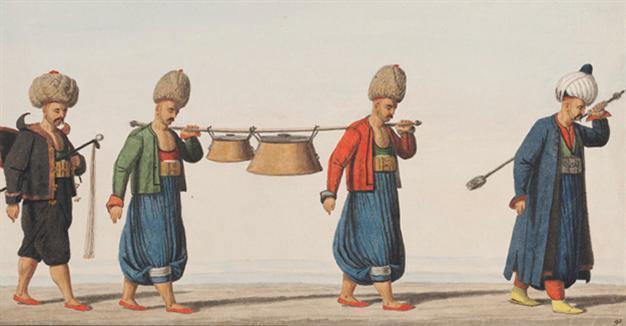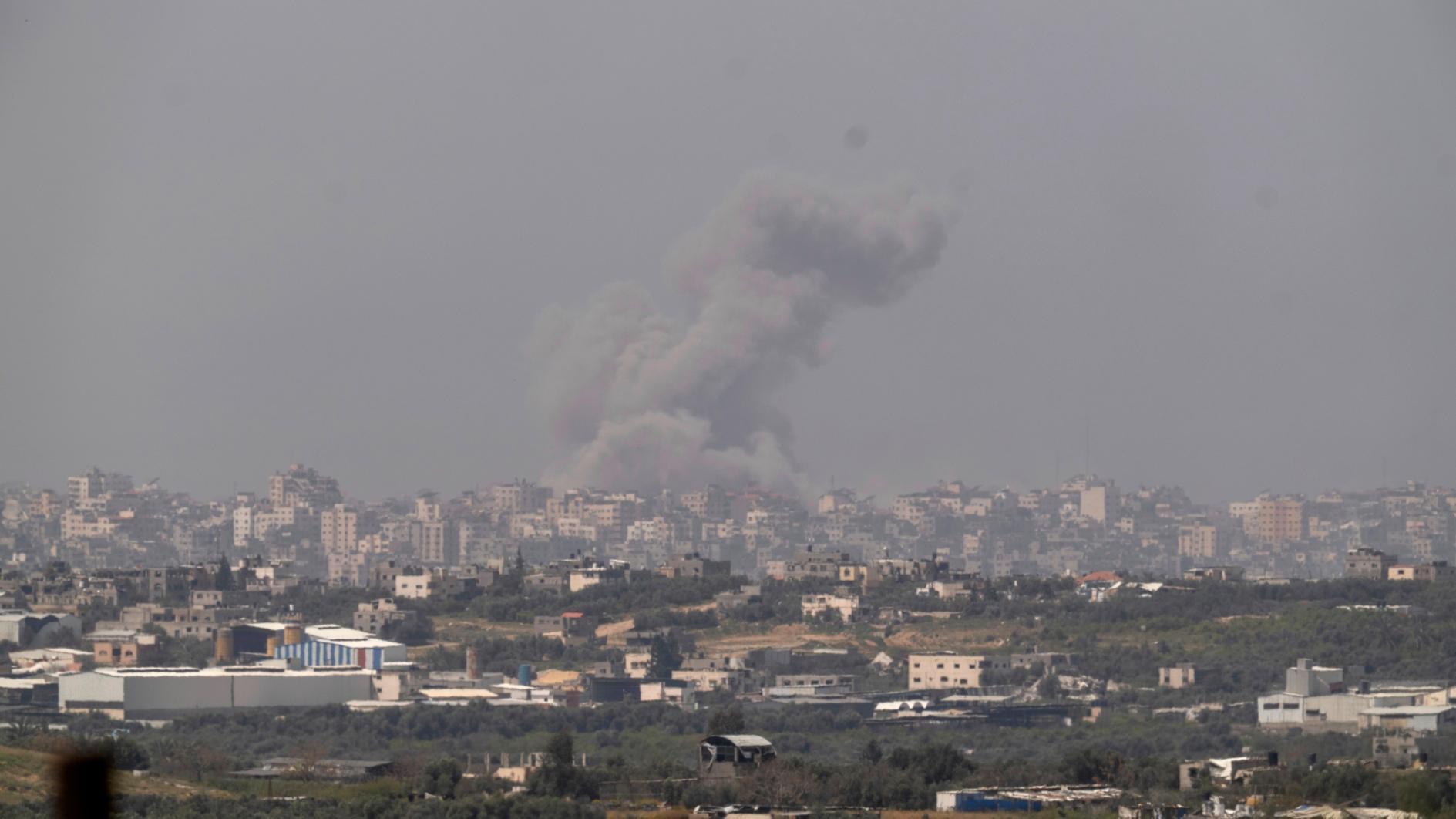The janissary, the coup and the cauldron
Aylin Öney Tan - aylinoneytan@yahoo.com
 The Janissary Corps were once the mighty army everyone feared. They were the ultimate power machines, to such an extent that in certain cases even the Ottoman sultan, who was in command of the janissaries, did not dare to challenge them. Turcophobia in Europe has deep roots in their campaigns conquering the Balkans and beyond. Of course there were times they did not like things going on in Topkapı Palace, or did not find their privileges satisfactory, or simply did not agree with the sultan and made their own coups, but with a difference: With a cauldron and a ladle!
The Janissary Corps were once the mighty army everyone feared. They were the ultimate power machines, to such an extent that in certain cases even the Ottoman sultan, who was in command of the janissaries, did not dare to challenge them. Turcophobia in Europe has deep roots in their campaigns conquering the Balkans and beyond. Of course there were times they did not like things going on in Topkapı Palace, or did not find their privileges satisfactory, or simply did not agree with the sultan and made their own coups, but with a difference: With a cauldron and a ladle!The awkward connection between kitchen utensils and a much-feared army is not easy to explain. The Ottoman infantry was structured around a hearth and a kitchen. The soldiers were young Orthodox Christian boys selected between the ages of seven and 14, and trained and educated to become members of the army. The name Janissary is Yeniçeri in Turkish, meaning the new soldier. They were the chosen ones; the Ottoman lands were routinely scourged to find the brightest, the strongest and the most attractive boys who would be eligible to be a good janissary, the new soldier. This system of collecting boys (called devşirme in Turkish) started in the 14th century, when the Ottomans were conquering more lands in Anatolia and Thrace, and there was an ample supply or slaves to be turned into trained troops. This collecting or enslaving of Christian boys was not much challenged by their families. On the contrary, many were willing to give away their boys (though they were converted to Islam and circumcised), as it meant a social advancement, with a possibility of becoming a high-ranking statesmen. The best of the best would be assigned to the palace as elite guards, eventually some lucky ones becoming grand viziers or governor generals. Even remaining an ordinary janissary guaranteed life, as they were paid regular salaries with occasional bonuses.
Coming back to cauldrons and ladles, the janissary organization was based on the model of a kitchen. High-ranking commanders were called çorbacı, the soupier or soup maker; perhaps soup was the core of the Ottoman cookery. Other military ranks were designated by culinary terms: Aşçıbaşı, the chef; karakullukçu, the scullion; çörekçi, the baker; gözlemeci, the griddle bread maker, and so on. The entire corps was known as ocak, the hearth of fire, and was commanded by an ağa, the master. The emblem of the whole janissary corps was a cauldron called kazan-ı şerif, the honorable cauldron, and the janissary headgear was ornamented with a spoon. Important decisions were taken while gathering around the sacred cauldron, including the scary decisions like starting a rite, or in today’s words, a coup. In such a case the cauldron would be overturned, the soup spilled and the cauldron turned to a huge drum banging with the beat of the ladle. No sultan would ever want to hear this thunderous sound of the cauldron and the ladle for sure! With this historical memory, a riot or upheaval or any uproar or a protest even within a family is called “raising the cauldron” (kazan kaldırmak) in Turkish language today.
Too much overturning the cauldron and banging the ladle repeatedly threatened the existence of an orderly government. The mighty janissaries eventually undermined themselves with increased corruption and abuse of power. Eventually the last fire of the hearth was put out in 1826 when the whole system was abolished. Now it was the turn of the sultan to stage a coup against the janissaries, pushing them into a riot by announcing that he was in favor of creating a new modern military, suppressing their last coup with a counter-coup and terminating the janissaries forever. Strange to say, but Turkish military history has its roots in a cauldron; coups are interrelated with soups, often started by raising a cauldron and a ladle; sometimes coups ending up being soups, or resulting in a medley of coup soups with counter coups. Awkward but true! Now it is time to enjoy a soup, this one will make you shiver…












